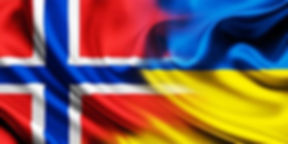Written by Oksana Huk
Christmas is one of the most important Christian holidays that has its roots in pagan worship and was associated with the celebration of the winter solstice. Later, Christianity replaced the ancient feasts with the birth of Jesus Christ, the Son of God. At the same time, much of the old was preserved.
Each country has preserved its unique traditions in celebrating the Christmas holiday, which has been passed down from generation to generation. Knowledge of these traditions makes it possible to better understand the mentality of the people, especially national character.
In Ukraine, Christmas is still celebrated in the Julian calendar. Ukrainians are looking forward to this holiday a whole year in advance and it is thoroughly prepared. Especially in our celebration is that Christmas begins with a forty-day fast, which ends on January 7. Christmas begins January 6 - Holy evening. When the first star begins to shine in the evening sky, Ukrainians sit down at a richly covered but meager table. It is common to spend the holy evening with the whole family.
The owner of the house first sits down at the table, lights a Christmas candle and blesses the dinner, then tastes Kutia and then sends it around to the whole family. Kutia (the old name for porridge) is the most important ritual dish of Christmas. Historians believe that the tradition of making kutia was established even in the period of the Trypillia culture (4000-3000 BC). At this time, kutia was prepared from processed wheat or barley grains and served with honey. Later, poppies and nuts were added to wheat, and in modern times raisins and other dried fruits.
After the cutie, you can start eating other dishes - such as borsch, fish, stewed cabbage, potatoes, varenyky (dumplings), holubcy (cabbage rolls), mushroom sauce and others. In different regions of Ukraine there may be different varieties of dishes, but the number is preserved. There must be a total of 12 regular meals on the table.
Especially with us is also table decoration. In the old days, the table was covered with hay, which was a symbol of the manger of the newborn Jesus.
Traditionally, garlic clove is placed under the tablecloth in the corners of the table - it protects the family from disease and evil forces.
On Christmas Eve, Didukh - the Christmas tree - is brought to the house. It consists of rye, wheat or oats. This is the main symbol of Ukrainian Christmas. Didukh symbolizes autumn, prosperity, the spirit of the ancestors and is a talisman of the family. Now the Didukh tradition is being revived, although there is usually also a Christmas tree placed in each house.
On the morning of January 7, Ukrainians greet each other with the phrase "Christ is born!", And in response they hear "Praise him!". On this day, people usually go to church and also visit relatives and friends. The first day of Christmas ends Lent, so Ukrainians sit down at a really festive and rich table and sing special songs. The Christmas song (Carol) is called Koljada. This is how the ancient slaves praised God for the winter sun. In Christian times, Christmas carols glorify the birth of Jesus Christ. Very popular is a special Christmas show called Vertep as a performance on religious themes (Nativity Scene). The name "Vertep" comes from sacred texts. According to them, this was the name of the cave where Jesus Christ was born. Historians believe that Vertep first appeared in Ukraine in the 17th century, and then it was a puppet theater. Today it is played in a theater with live people on stage. The plot revolves around the most popular plot about the birth of Jesus in Bethlehem and about King Herod. The cycle of the Christmas celebration lasted with short breaks until Epiphany on 19 January.
The celebration of Christmas was strictly forbidden during the Soviet era and the rule of the Communist regime. Therefore, the Ukrainian diaspora actively celebrated Christmas all over the world. Following Ukraine's declaration of independence in 1991, old traditions are being actively revived. The Ukrainian community in Norway also celebrates Christmas, with the preservation of Ukrainian traditions.

